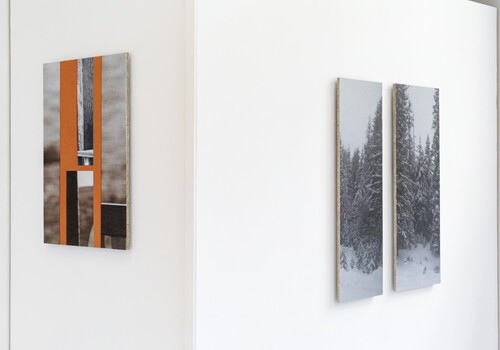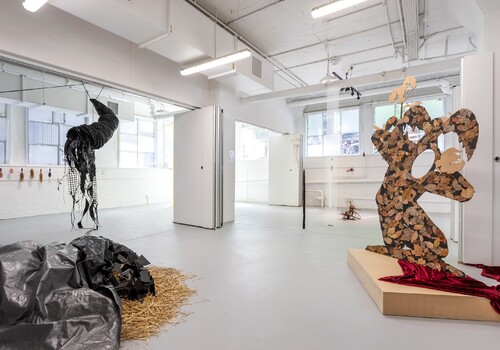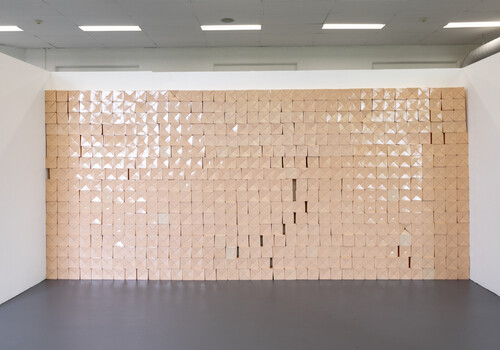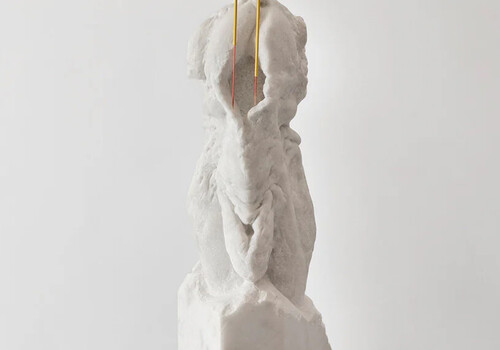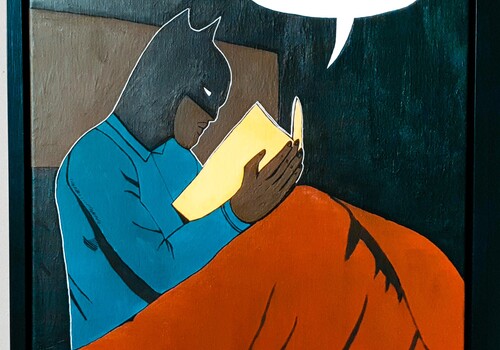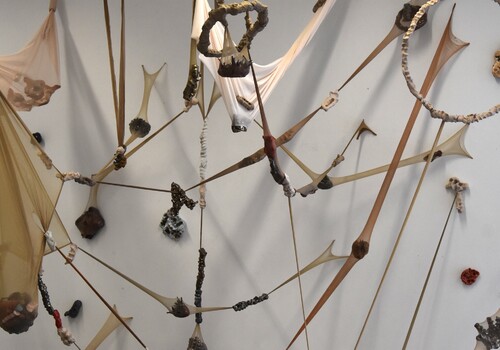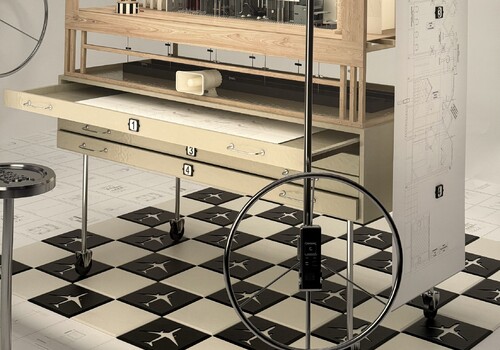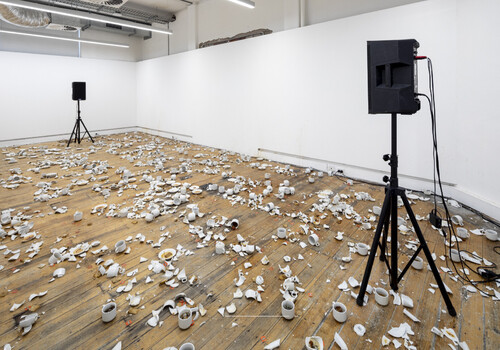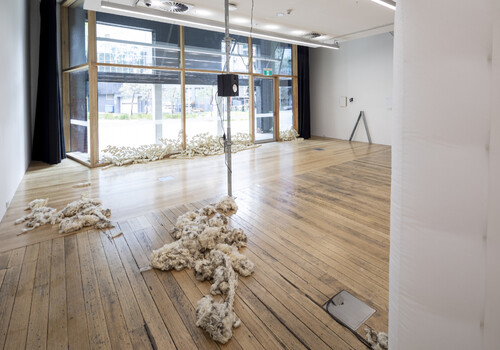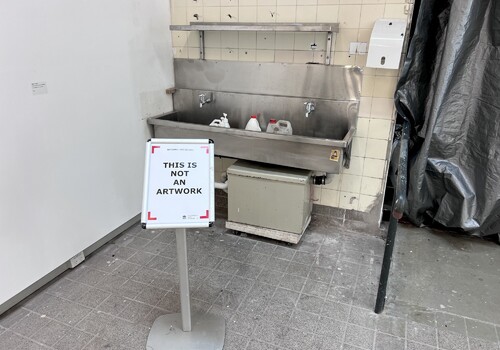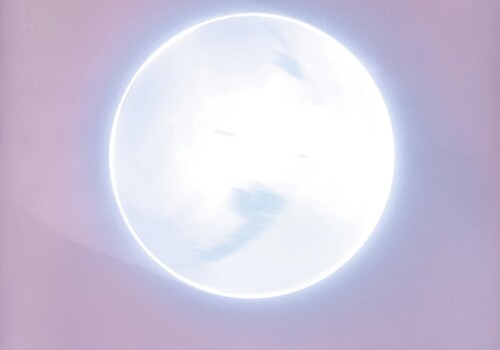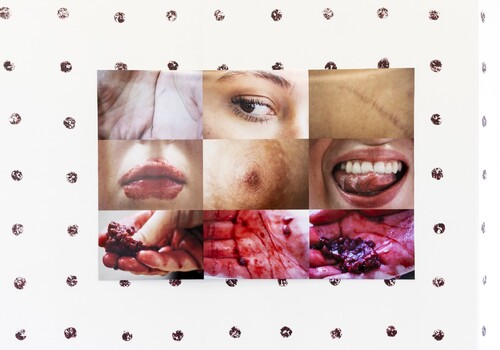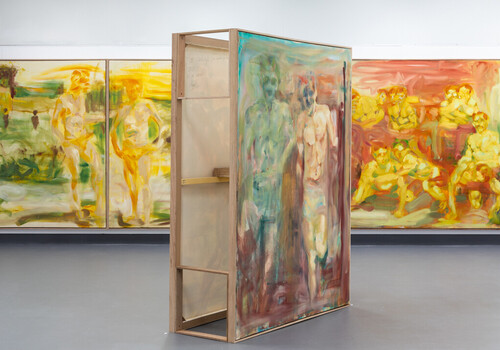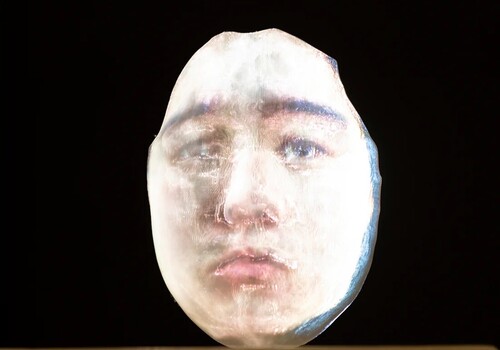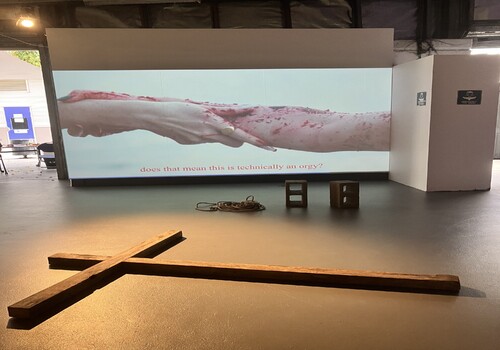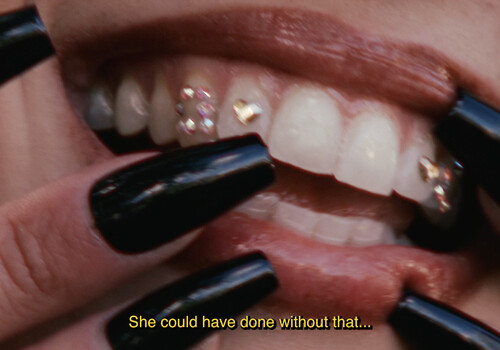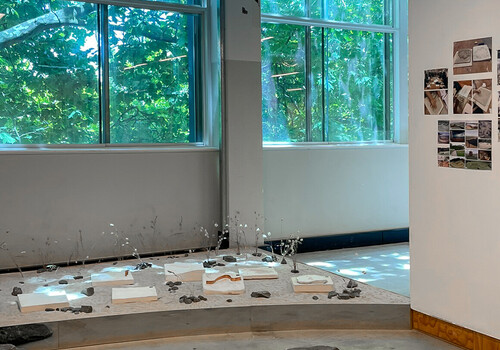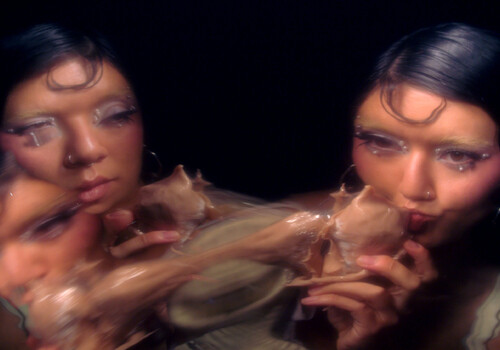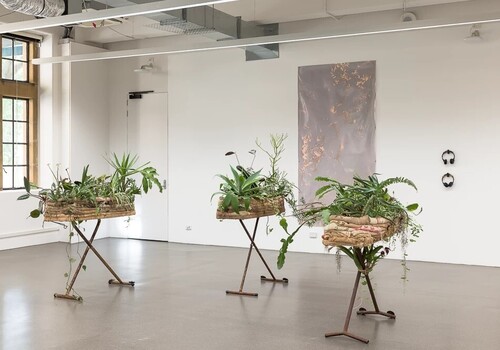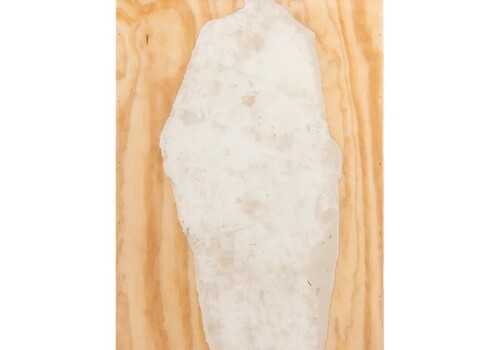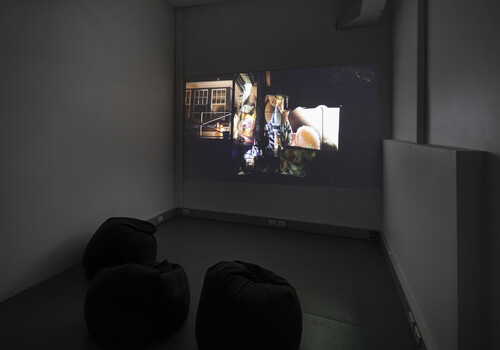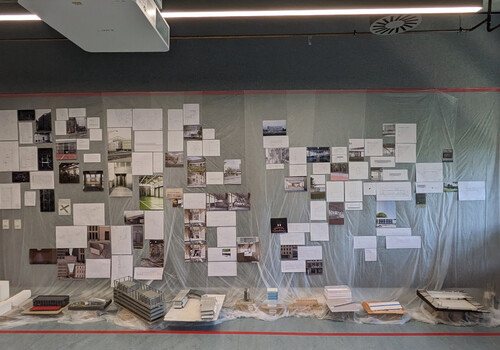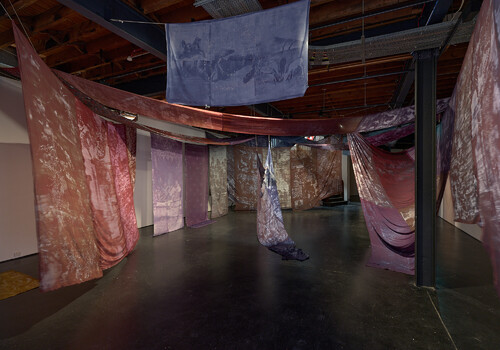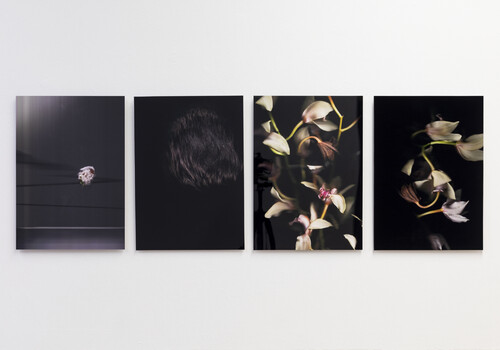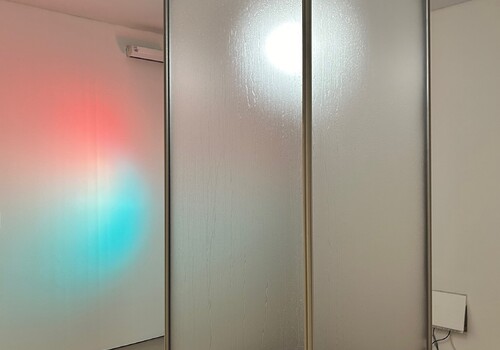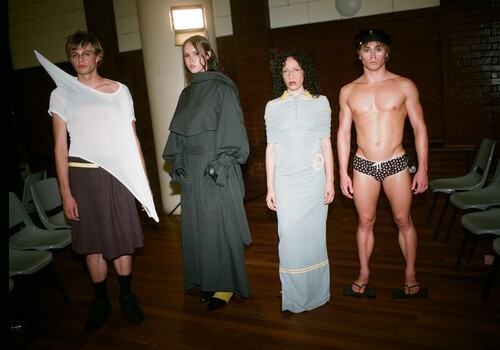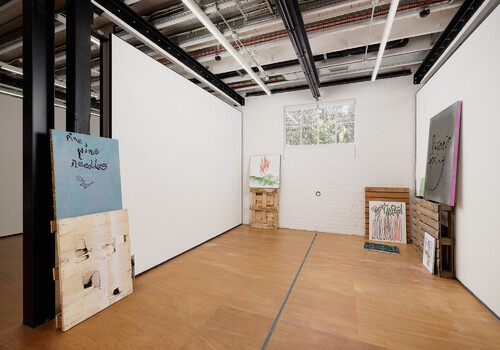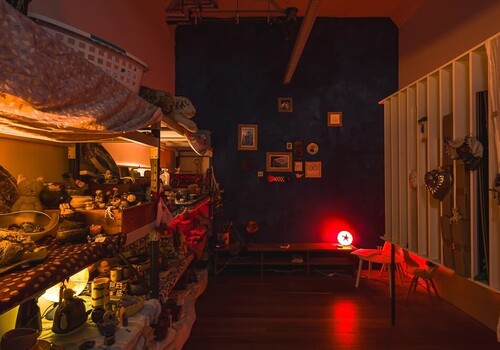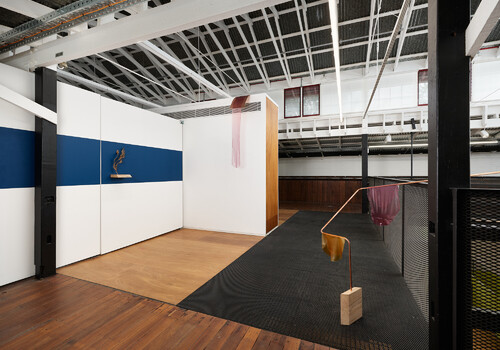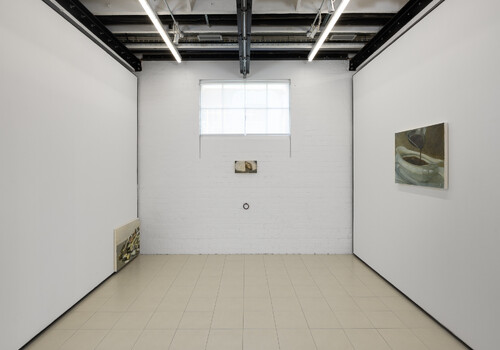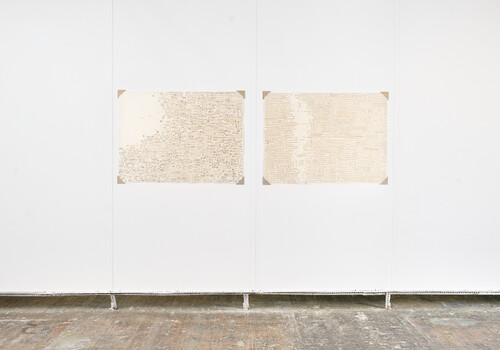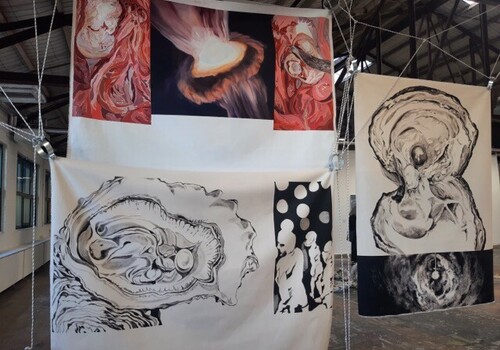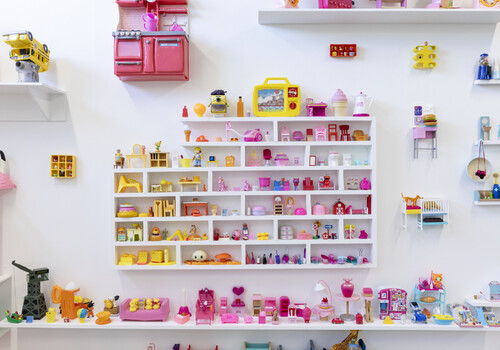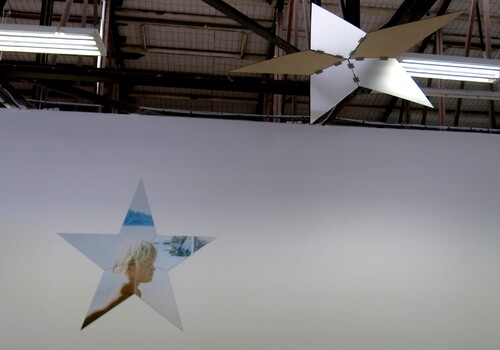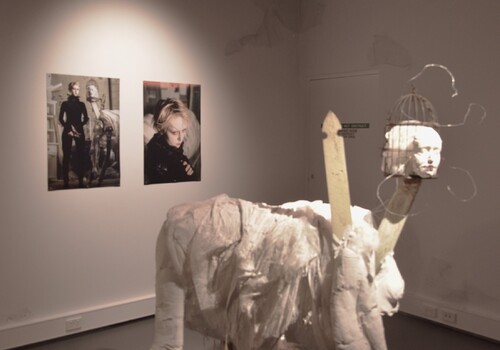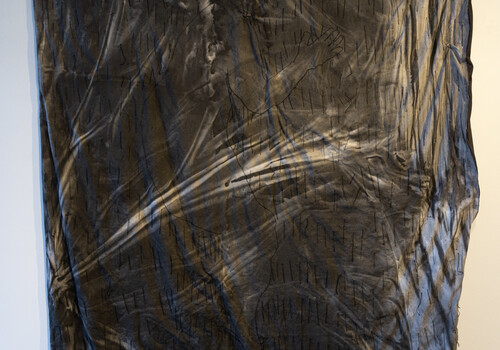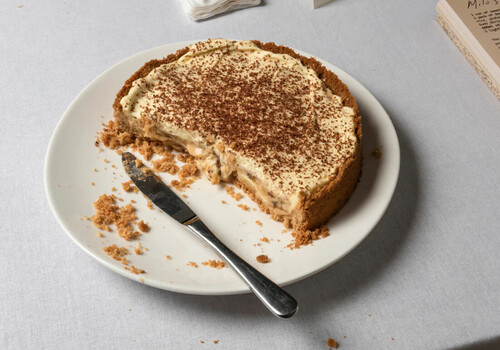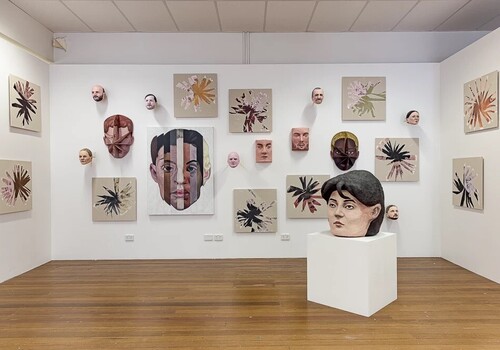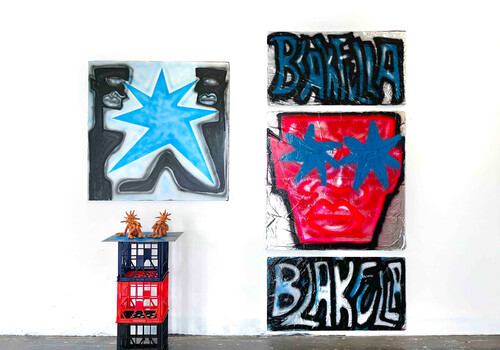Bachelor of Fine Art, Master of Fine Art, RMIT
By Ebony Maurice-Wilmott
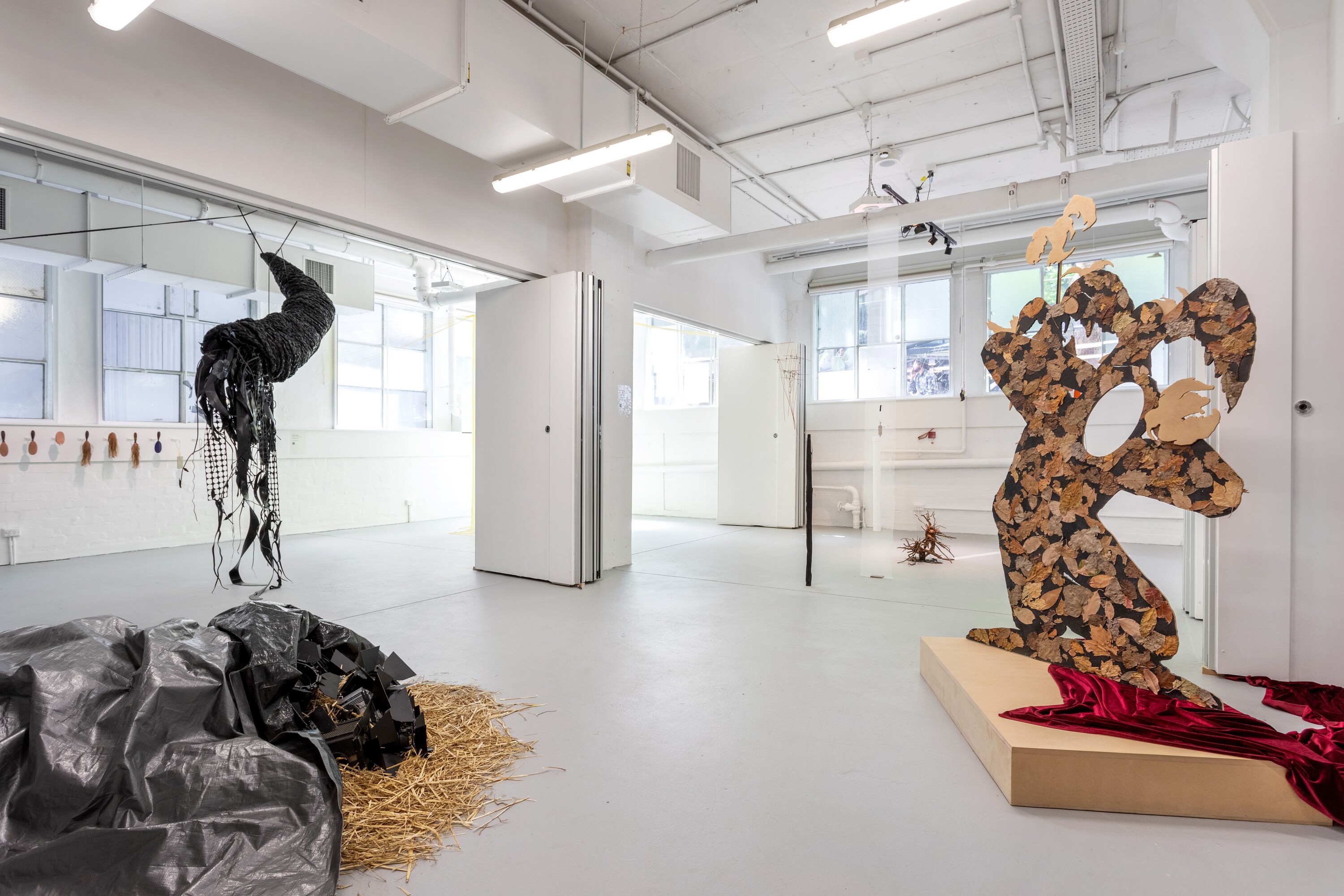
Jade Cargill, shapes of the wind, 2024, MDF, Fresnel lights, leaves, sticks, bronze, tarp, hay, shellac, fabric, plastic crow, acrylic sheet, light drying clay. Photo: Licia Di Mario
“A good illusion is a bad illusion, and a bad illusion is a good illusion,” according to Jean Baudrillard. Adhering to this maxim, RMIT Bachelor of Arts graduate, Jade Cargill exposes the raw materiality of his sculptural work shapes of the wind (2024). Unpainted MDF, repurposed signage, and a bolt of red velvet fabric reminiscent of a stage curtain are used in the construction. From these materials, Cargill creates visual riddles, tweaked to form a field of floating signifiers. The first is a cut-out of a robed figure with raised arms being chased by crows. The figure and some crows are painted black with crisp oak and eucalyptus leaves pasted on at a diagonal. The face-in-a-hole motif is one you might see at a theme park, presenting an opportunity to wear another’s skin. The practice dates back to the 1820s where people would stand behind boards decorated with aristocratic or pauper clothes, fighting against a rigid class system with humour.
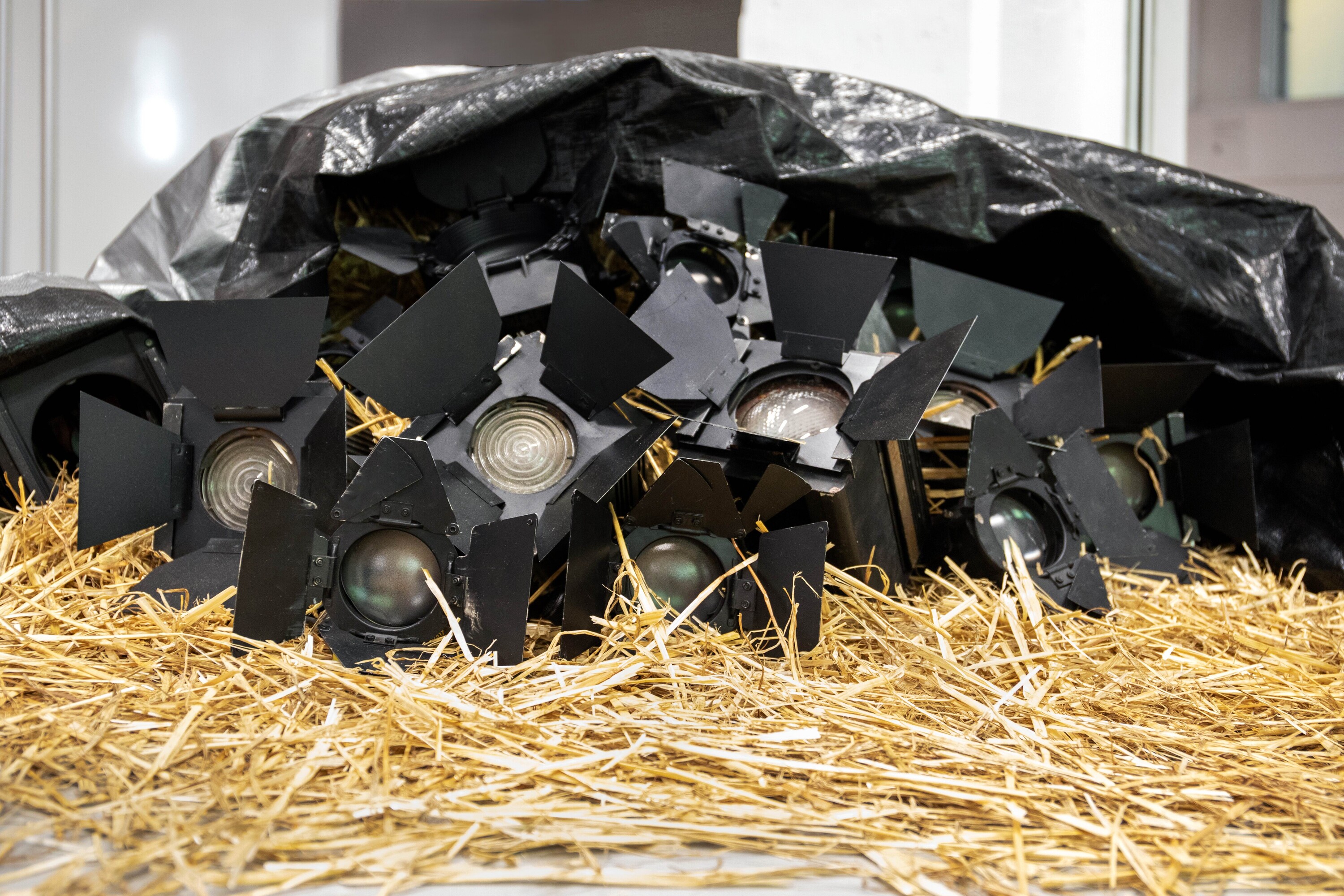
Jade Cargill, shapes of the wind [detail], 2024, MDF, Fresnel lights, leaves, sticks, bronze, tarp, hay, shellac, fabric, plastic crow, acrylic sheet, light drying clay. Photo: Licia Di Mario
Peering out of the hole in Cargill’s work, your gaze might fall on a clutter of Fresnel lights laid on a bed of hay under a tarp. The Fresnels, commonly used in theatre and film, double as baby birds in a nest, the flaps becoming wings and hungry beaks. Such alienation tactics were employed in Bertolt Brecht’s spare use of props, i.e. when he would have his character use a suitcase that became a desk, reminding the audience throughout the play that they were viewing a fabricated narrative and thus forcing a more objective reading.
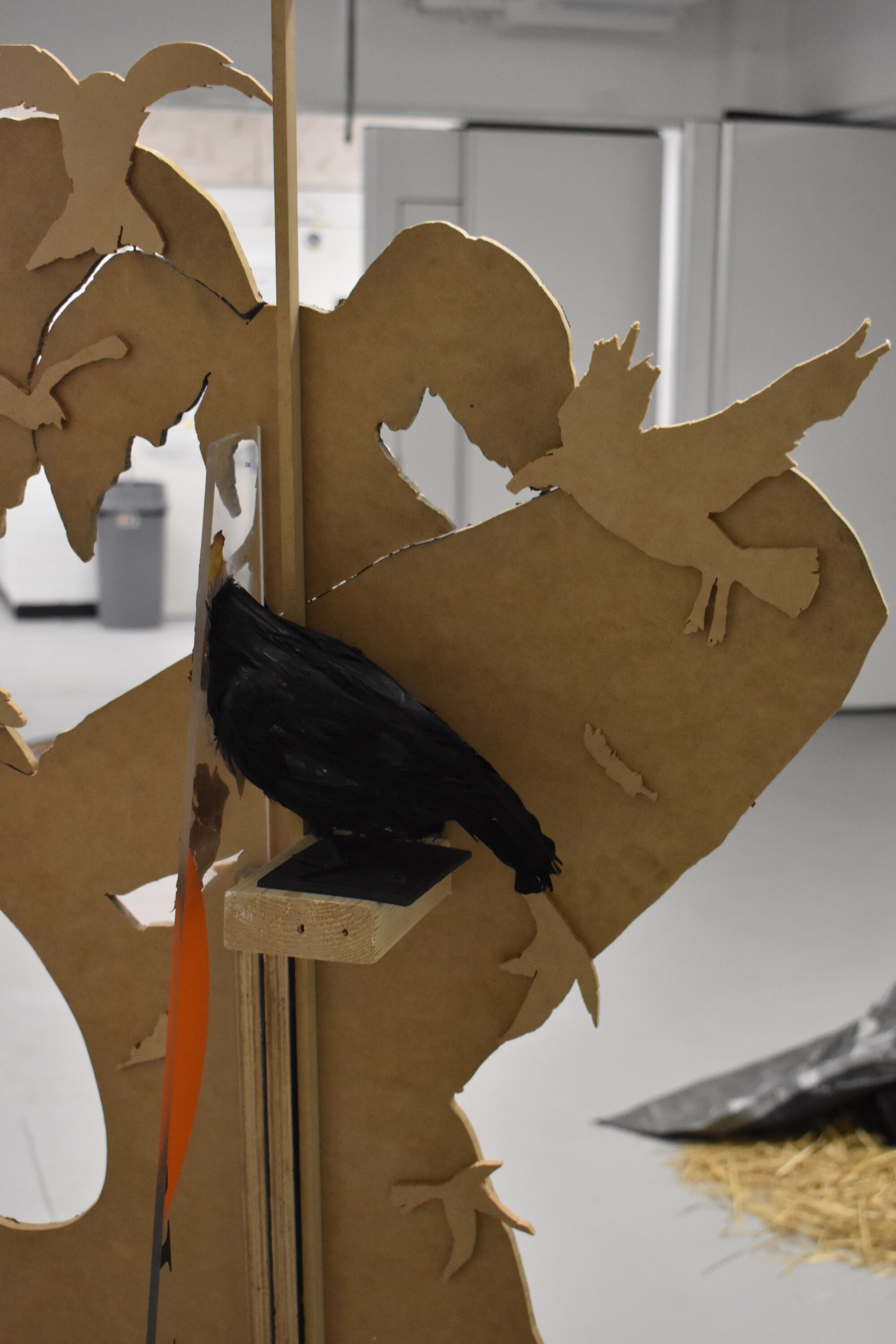
Jade Cargill, shapes of the wind [detail], 2024, MDF, Fresnel lights, leaves, sticks, bronze, tarp, hay, shellac, fabric, plastic crow, acrylic sheet, light drying clay. Photo: Licia Di Mario
Cargill’s carnivalesque figure is likely a Harlequin. A comic servant character originating from early Italian theatre, the name Harlequin comes from the Old French, Hellequin – a monk chased by demons. Could the demons be crows? Another crow, this time in plastic form, haunts the figure, beheaded on a shelf fixed to the Harlequin’s back. I’ve noticed a recent resurgence of taxidermic motifs, including a cat in Kostas Pavlidis’ exhibition at Strawberry, Vivienne Tetaz’s moth at the VCA grad show, and the RMIT Masters graduate Jason Lehane’s duck in his theatre set construction Things are not what they seem (2024).
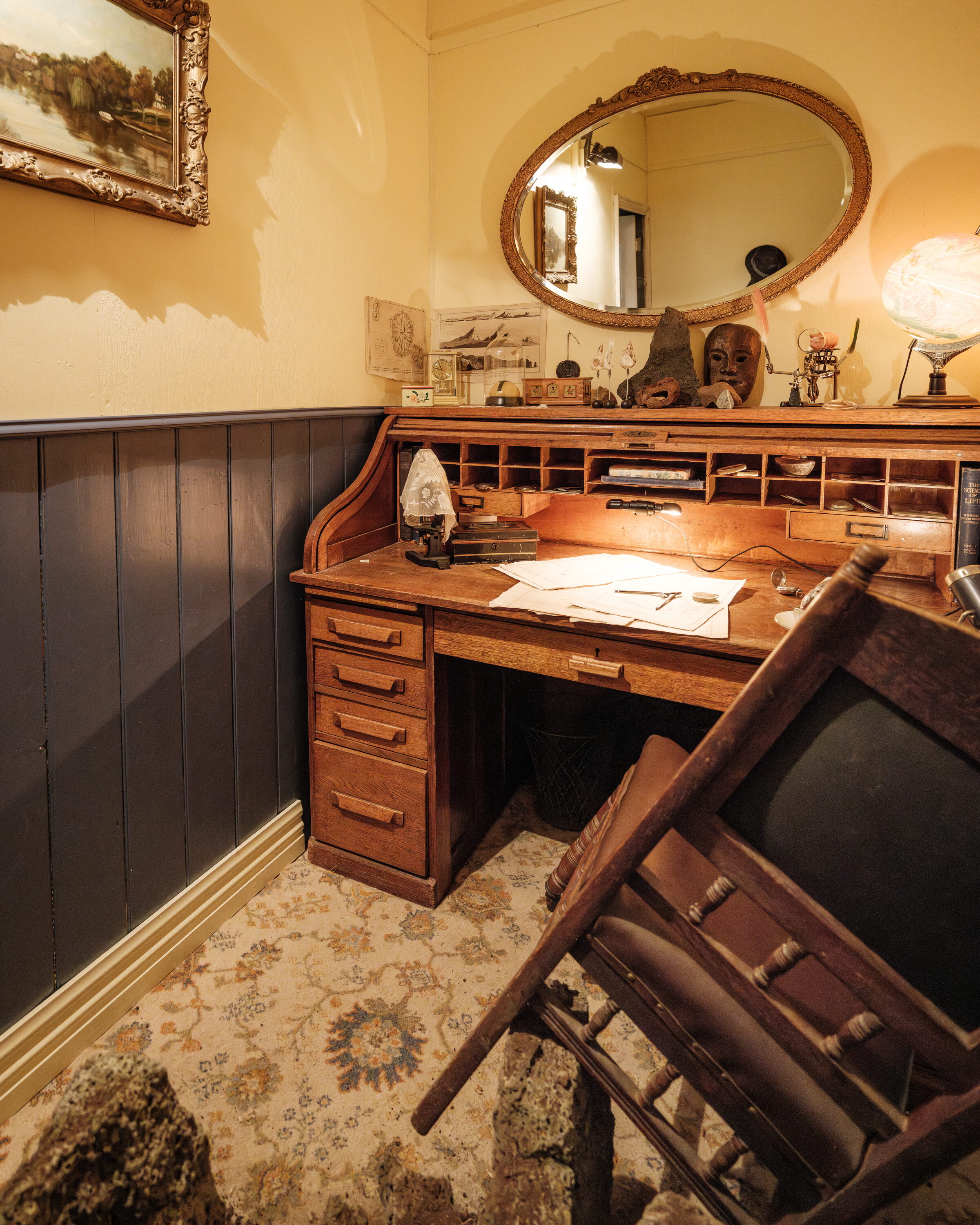
Jason Lehane, Things are not what they seem [interior detail], 2024, mixed-media installation. Photo: William Kang
Lehane has 41 years of experience in theatre set design. Speaking to the artist at the opening, he mentions ocularcentrism in theatre, whereby the audience’s eye follows the actor on stage, led by a roaming stage light. Lehane cites Juhani Pallasmaa’s The Eyes of The Skin as a reference to architectural theory that aims to involve the other senses. In his immersive installation, Lehane employs haptics which make the floor shudder accompanied by sound which emulate an imminent volcanic eruption. You’re invited to look through peepholes that peer onto screens depicting the lithic surfaces of the sun and lava flows. Igneous rocks protrude through the carpeted floor with the smell of Earth transported from Lehane’s Red Barn Farm studio. With geologic and geographic references, the set, reminiscent of the interior of a Victorian study, is a mise en scène of a colonial project with references to cartography, land surveying, extractive collection and cataloguing, pastoral land and tall ships.
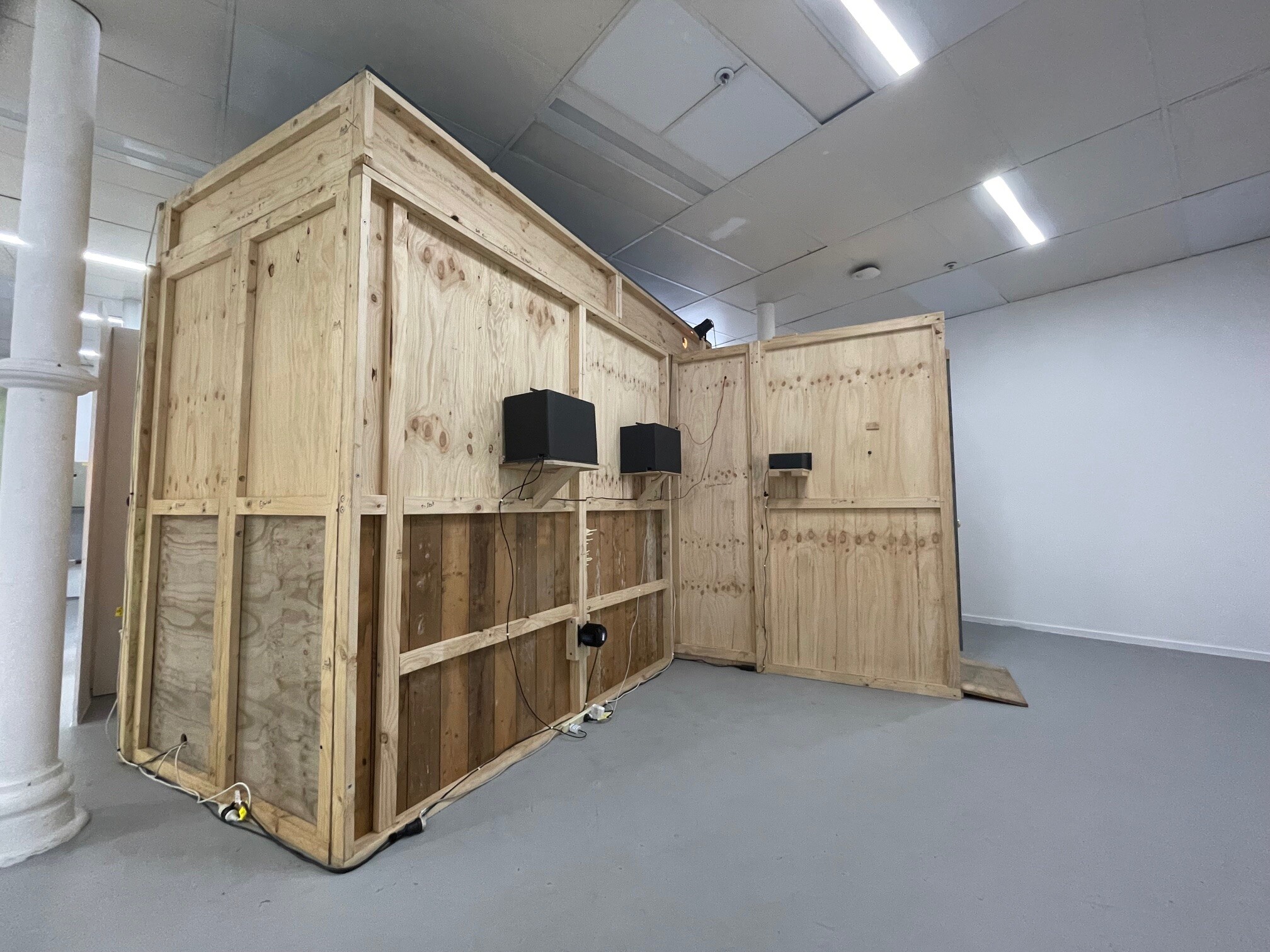
Jason Lehane, Things are not what they seem [exterior detail], 2024, mixed-media installation. Photo: William Kang
Above the artist’s statement, Lehane has rigged a surveyor’s lens. An object of curiosity, the lens reflects your eye back at you no matter where you stand. The panoptic surveillance initiated by my own gaze suspends me. It’s an uncanny device. Including the mysterious lens in the context of the Lehane’s theatrical work reminds us of the close relationship between theatre and magic, with his exposed set pulling back the curtain on a dynamic cocktail of trickery and illusion.
Ebony Maurice-Wilmott is an artist from Naarm/Melbourne and has recently completed a Bachelor of Fine Arts (Honours) at Monash University.
